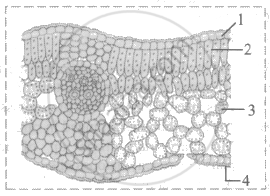Advertisements
Advertisements
Question
The arrangement of ovules within the ovary is known as placentation. What does the term placenta refer to? Draw various types of placentations in the flower as seen in T.S. and V.S.
Solution
Placentation: The arrangement of ovules within the ovary is known as placentation. The placentation is of different types namely, marginal, axile, parietal, basal, central and free central. In marginal placentation, the placenta forms a ridge along the ventral suture of the ovary and the ovules are borne on this ridge forming two rows, as in pea. When the placenta is axial and the ovules are attached to it in a multilocular ovary, the placentation is said to be axile, as in china rose, tomato and lemon. In parietal placentation, the ovules develop on the inner wall of the ovary or on the peripheral part. The ovary is one-chambered but it becomes two-chambered due to the formation of the false septum, e.g., mustard and Argemone. When the ovules are borne on a central axis and septa are absent, as in Dianthus and Primrose the placentation is called free central. In basal placentation, the placenta develops at the base of the ovary and a single ovule is attached to it, as in sunflower or marigold.
 Marginal |
 Parietal |
 Axile |
 Free central |
 Basal |
APPEARS IN
RELATED QUESTIONS
Draw illustrations to bring out anatomical difference between Monocot root and dicot root.
In the given transverse section of a dicotyledonous leaf, identify the parts labelled.
Casparian strips occur in ______.
A transverse section of stem is stained first with safranin and then with fast green following the usual schedule of double staining for the preparation of a permanent slide. What would be the colour of the stained xylem and phloem?
Distinguish between the following:
Stele and vascular bundle
